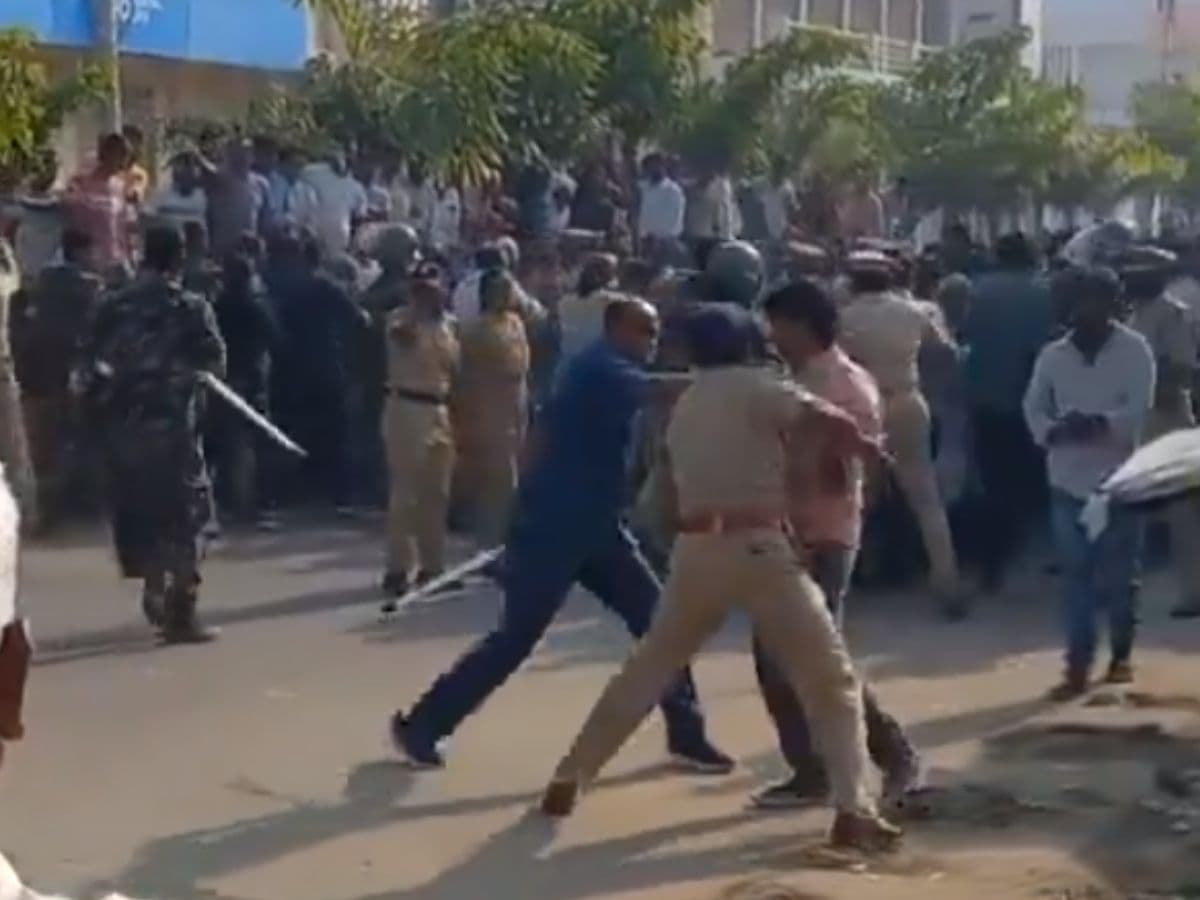
Hyderabad: Velpur village in Nizamabad district recently witnessed tense moments following a call for a social boycott against the Muslim community over a dispute involving a piece of land, where a 150-year-old graveyard and Eidgah are situated.
On Monday, December 18, a meeting took place involving the revenue divisional officer (RDO) along with members of the Waqf board, assistant commissioner of police and village elders to address the issue.
What exactly happened?
Trouble began on December 9 when a call for a social boycott against the Muslim community was given by the village development committee (VDC) in Velpur village.
Additional district commissioner of police S Jayaram told Siasat.com that following the information, Section 144 was imposed to avoid any violent clashes.
Police also served notices to both parties – VDC and Muslim communities – and asked them to resolve the matter peacefully. “While the Muslim representatives were present, VDC members did not show up,” the police officer said.
The following day on December 10, around 200-250 people from Hindu community gathered at the graveyard and eidgah, spread over 4.12 acres of land, intending to destroy the graves there. Tension prevailed as police resorted to lathi charged and barricaded the area.
“Realising the situation, the Nizamabad district collector arranged a meeting on December 11 with members of the Waqf board, revenue divisional officer, ACP and Velpur village elders,” the police officer said.
According to the police, VDC members were not invited as they neither represented the government nor the village administration.
While there has been no concrete solution, the Muslim community, on December 13, released a statement saying VDC was trying to create communal distress. “Even after receiving notices from the district collector and Nizamabad commissioner of police, the VDC are not budging with their communal activities. We request the Telangana director general of police to ensure safety for Muslims and communal harmony in Velpur,” said one of the representatives.
According to the additional DCP, the meeting was held amicably between the religious communities. “The Muslim community has asked for two days. The matter should be resolved by December 20,” the police officer told Siasat.com.
Long-pending dispute
The conflict has been ongoing since 2015 when VDCs claim that the land was earlier used for grazing their cattle and Muslims argue it had been a graveyard for nearly 150 years.
Both parties approached the Lok Adalat. However, the matter remained unresolved as the Muslim representatives were absent during the hearing, owing to which the VDC decided to continue with their protest.
Role of Village Development Committee
The Village Development Committee or VDC started more than 10 years ago in several villages of Nizamabad and Kamareddy districts as a self-organisation for taking care of disputes without having to approach the police or the courts. The committees also ensure the president and its members keep changing annually.
According to an article on The News Minute, VDCs have been mostly dominated by the upper class community, thus reflecting absolute casteism and communal hatred.
Social boycott, a norm for VDC
Call for a social boycott against the SC/ST and religious communities has been a norm for VDCs.
On May 30, 2019, during the holy month of Ramadan, the VDC imposed a social boycott against the Muslims in Balkonda village. A fine of Rs 5,000 was imposed on speaking to a Muslim, and Rs 20,000 for having tea/food in a Muslim-owned shop.
In 2020, before the COVID-19 lockdown, a police complaint was registered by Muslims alleging that the VDC had imposed a social boycott on over 100 Muslim families, the New Indian Express reported.
Villagers were instructed not to buy anything from Muslim shops or use autorickshaws driven by community members.
On July 1 this year, the VDC allegedly imposed a social boycott against 150 Dalit families in Manthani village. Villagers were strictly instructed not to buy milk, curd or grocery products from the ostracised families.
